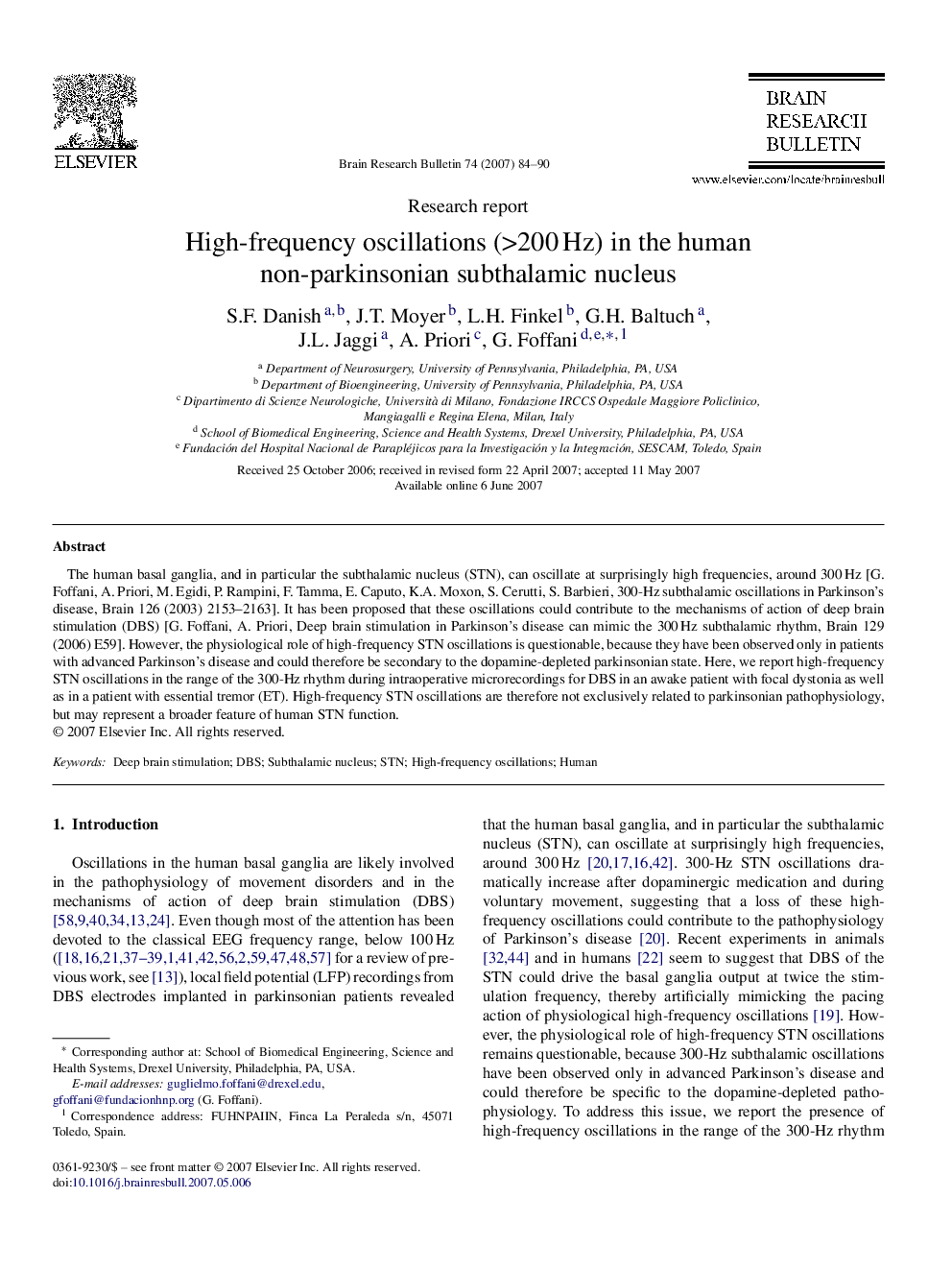| Article ID | Journal | Published Year | Pages | File Type |
|---|---|---|---|---|
| 4319907 | Brain Research Bulletin | 2007 | 7 Pages |
The human basal ganglia, and in particular the subthalamic nucleus (STN), can oscillate at surprisingly high frequencies, around 300 Hz [G. Foffani, A. Priori, M. Egidi, P. Rampini, F. Tamma, E. Caputo, K.A. Moxon, S. Cerutti, S. Barbieri, 300-Hz subthalamic oscillations in Parkinson's disease, Brain 126 (2003) 2153–2163]. It has been proposed that these oscillations could contribute to the mechanisms of action of deep brain stimulation (DBS) [G. Foffani, A. Priori, Deep brain stimulation in Parkinson's disease can mimic the 300 Hz subthalamic rhythm, Brain 129 (2006) E59]. However, the physiological role of high-frequency STN oscillations is questionable, because they have been observed only in patients with advanced Parkinson's disease and could therefore be secondary to the dopamine-depleted parkinsonian state. Here, we report high-frequency STN oscillations in the range of the 300-Hz rhythm during intraoperative microrecordings for DBS in an awake patient with focal dystonia as well as in a patient with essential tremor (ET). High-frequency STN oscillations are therefore not exclusively related to parkinsonian pathophysiology, but may represent a broader feature of human STN function.
